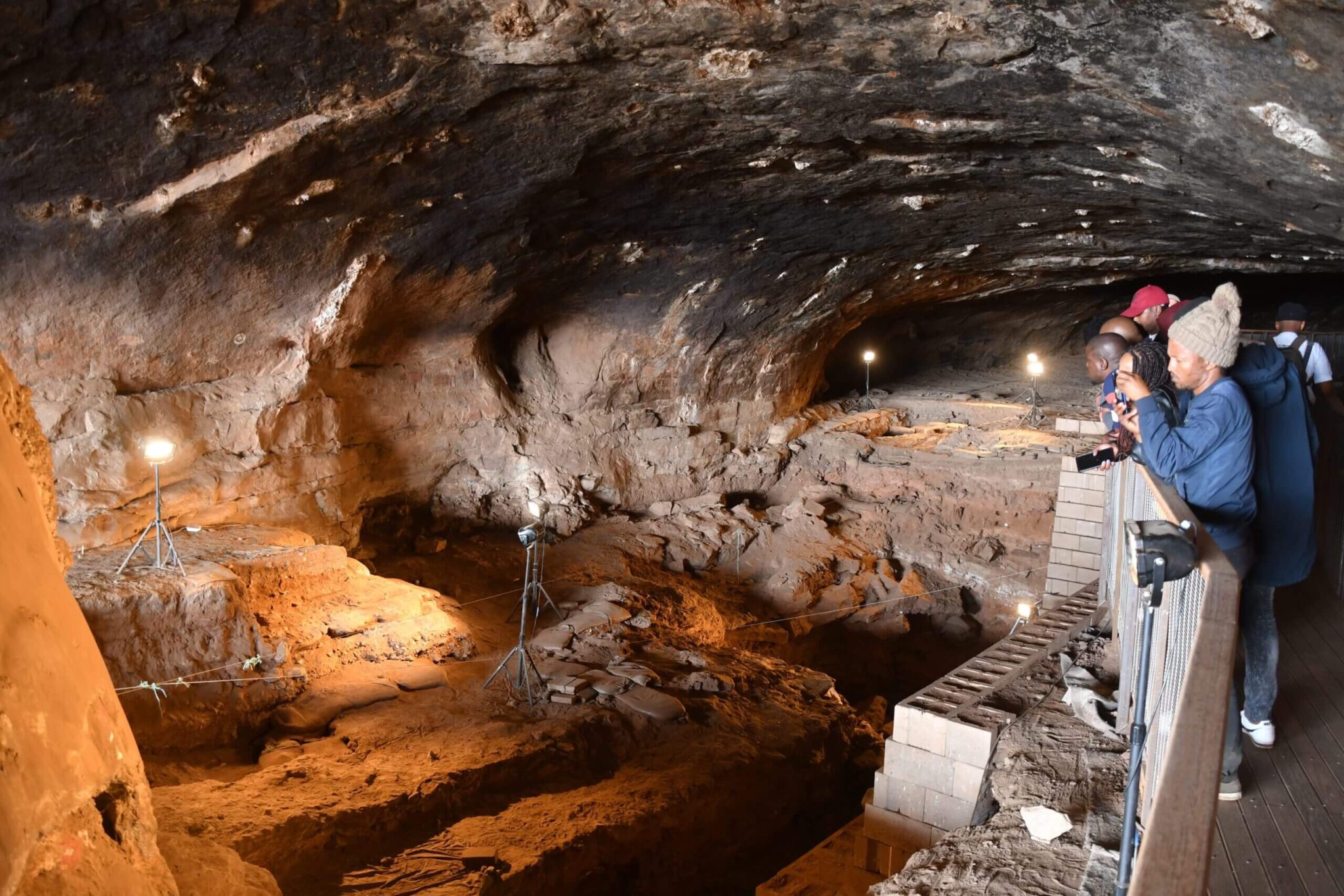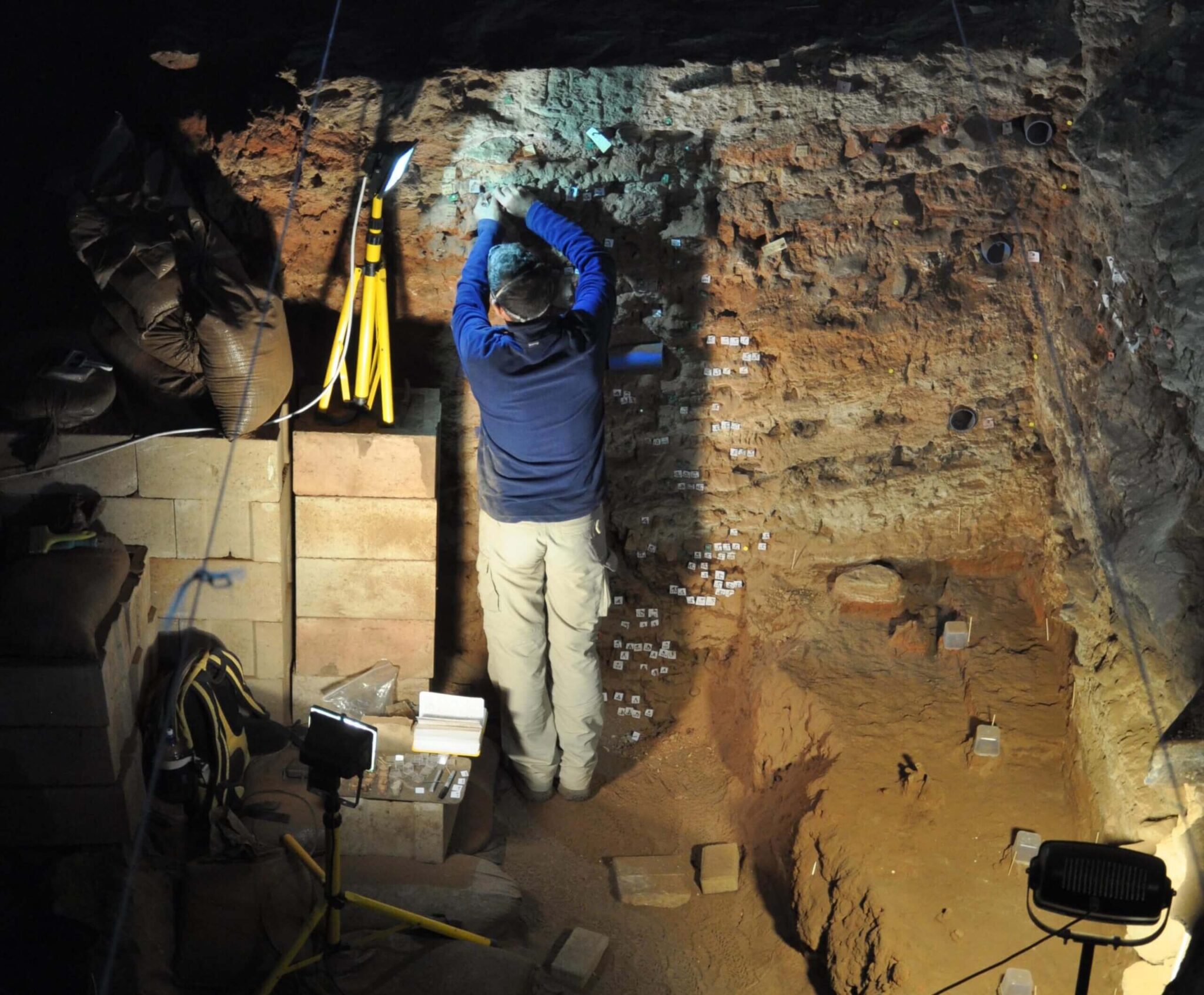Researchers from the Hebrew University and the University of Toronto found that the ancient hominids settled in caves and began making tools as early as 1.8 million years ago in South Africa: "The study reliably confirms and establishes our previous estimates regarding the ages of the first settlement in the cave, the changes in stone tool production technologies and the first deliberate use of fire "


The Wonderwerk Cave in South Africa, located on the eastern flanks of the Kuruman Hills on the edge of the Kalahari Desert, is one of the earliest cave settlements known to the world of science, and is a major source of information regarding the cultural and technological development of the early hominins. In a new study, led by Researchers from the Hebrew University - Prof. Ron Shaar, Prof. Ari Matmon, Dr. Liora Kolska Horvitz - and Prof. Michael Hazan from the University of Toronto, The researchers succeeded in re-dating the settlement sequence in the cave and determined that the age of the lower level, where remains of simple stone tools from the Oldowan culture were found, is at least 1.8 million years old. This find confirms that this is probably the oldest intentional settlement in the world inside a cave. Also, the research brings new evidence that the transition from simple tools to manual stone carving in the cave occurred at least a million years ago, and that the first use of fire occurred around a million years before the present day and is the oldest evidence of this technology in the world. the study Published in "Quaternary Science Reviews".

The Olduvian culture marks a critical stage in human evolution in which early hominins in East Africa first began carving simple stone tools about 2.6 million years ago in East Africa. Which species of hominid produced these tools, how the technology spread in Africa and its possible connection to the transition to systematic hunting - are among the interesting questions in the study of prehistory. Until now, researchers have had difficulty dating the historical sequence of events related to the Olduvian culture in South Africa, since most of the findings from this period were discovered in open sites or were washed from the outside into caves, for example the caves in the area known as the 'Cradle of the Human Race'. Wonderwork Cave is unique in this regard. This is the only cave in the world where a sequence of geological layers has been exposed, which preserve the Olduvian settlement in place. In addition, above the Oldoban there is another sequence of layers representing the Acheulean culture, which allow researchers to document the transition to a more advanced production of hand stones - from crude and simple hand stones to developed and refined forms.
The importance of Wonderwork Cave also stems from the fact that it is the earliest place where fire was deliberately used. Previous studies have identified the use of fire in the cave, probably by the Homo erectus species, based on the presence of burnt bones and tools, burnt soil, and the presence of ash. A microscopic analysis of the sediments discovered at a depth of more than 30 meters inside the cave confirmed that it was a deliberate fire and not material that was swept in from the outside. In the latest study on the site, the researchers dated the use of fire to about a million years ago. The current research strengthens and confirms the reliability of the previous ages.
In order to determine the age of the archaeological layers in the cave, the current research team used two different methods that are usually used to date geological materials - paleomagnetic dating and cosmogenic burial ages. For the paleomagnetic dating, the researchers collected hundreds of sediment samples from the entire archaeological sequence, and measured the magnetic direction recorded in the soil after it was sealed into the layer. They recognized that part of the archaeological sequence recorded a magnetic field that points south, exactly the opposite of Earth's magnetic field today. A combination of the sequence of paleomagnetic reversals, the age of which is well known, with results obtained from another dating method called cosmogenic burial age, led to the determination of a time scale describing the sequence of settlement in the cave - which, according to the study, began approximately 1.8 million years ago.
Prof. Ron Shaar from the Institute of Earth Sciences at the Hebrew University, the lead author of the article, explains the challenge in dating cave sediments: "The layers in the cave were formed over millions of years, in a very slow process in which sand and clay that come from outside are gradually swept away and sink inside the cave in a sequence of layers that include, between The rest, remains of the activity of the ancient hominins such as stone tools and animal bones - the prey they fed on. Since there is no single simple method for determining the age of such ancient layers, we chose to combine two methods.'
Prof. Ari Matmon, who currently serves as the head of the KDA Science Institute, explains the principle of a cosmogenic burial age: "The sand outside the cave contains quartz grains that work like a geological clock. As long as the quartz grains are outside the cave, they are exposed to cosmic radiation. The radiation sets off a chain of nuclear reactions that eventually form inside the quartz crystals new elements - aluminum and beryllium. When grains of sand enter the cave and are no longer exposed to cosmic radiation, the clock starts working as a result of radioactive decay of these elements called 'cosmogenic isotopes'. In the laboratory, we are able to measure the concentrations of the cosmogenic isotopes and determine when the sand entered the cave and became part of the archaeological layer.'
Prof. Michael Hazan and Dr. Liora Kolska Horvitz, who have been leading the research in the cave for over 15 years, conclude: "Now, we have a solid age framework for the beginning of the prehistoric culture in South Africa. The new study reliably confirms and substantiates our previous estimates of the ages of the first settlement at Wonderwork Cave in Oldoban, the first stone tool production and the first directed use of fire. The importance of the new evidence is that it defines a clear timeline of the development of early human culture in South Africa. These findings enable a deeper understanding of human evolution in Africa, and the relationship between ancient cultures and changes in climate and the settlement environment.'
More of the topic in Hayadan:
- Ayalon Cave, where very rare species of beavers live, is on the brink of an ecological disaster
- Fragments of new scrolls, the skeleton of a 6,000-year-old girl and the oldest complete basket in the world were discovered in David Yehuda
- Remains from the time of Yehoshua ben Nun were uncovered in Rosh Pina
- The earliest evidence of the use of stone tools for grinding by our hominin ancestors from 350 thousand years ago was found
